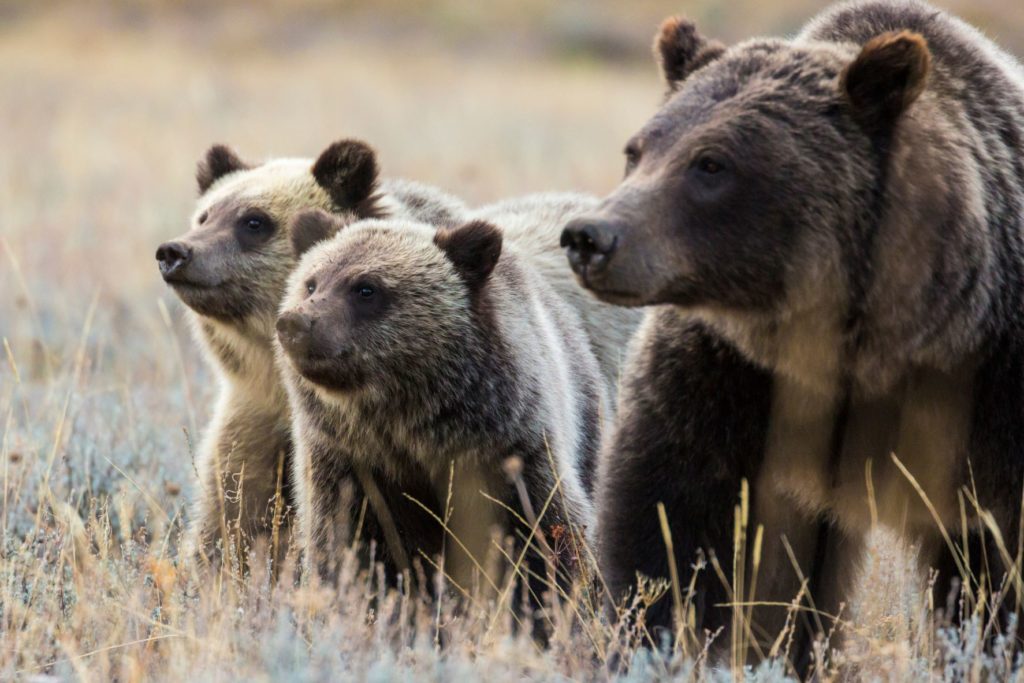Holy cow. I am impressed at the boldness of bear 399. She is a survivor and is imparting this skill and resourcefulness on her four cubs. How did we get from the near extirpation of grizzly bears to bears walking through Jackson?
The incredible foresight of the Endangered Species Act has played a huge role in saving this incredibly charismatic and fascinating bruin. In our small community—a community that has broad impacts on both the Greater Yellowstone Ecosystem and the world audience as a whole—can we step up in the spirit of science-powered knowledge to protect our bears?

We’ve shown our love of our local moose through our willingness to spend millions of our dollars to protect them from cars and provide a permeable landscape. We adamantly protect our elk and deer by modifying and removing impediments such as fences on the landscape. We urge our elected officials to make decisions that reduce our carbon footprint. Can our community also take unified bear-wise actions to protect our beloved grizzlies such as removing our bird feeders, paying extra to bear-proof our waste, and while recreating, moving about the landscape is if we share it with wild creatures?
Science tells us that feeding wildlife leads to the un-wilding of those animals and often their death. Feeding wildlife can lead to increased incidence of disease spread (think social distancing) and draws animals into human-dominated areas where the potential for conflict is very high. Wild animals generally do not need our help, especially with food. They have evolved to fit specific niches and often have very specific diets. Human-provided food can kill animals directly. Deer, elk and moose experience great pain leading up to their death if they consume foods other than what they evolved to eat.
Human-fed wildlife often become habituated. A habituated animal may seem “tame”, but the problem is that they are not; they are simply willing to tolerate reduced spacing from humans in order to get food resources. This tolerance has a threshold and when that threshold is broken, it becomes a dangerous situation for nearby humans—whether it be the hand that feeds or a hapless passer-by. The reaction of the animal to its boundaries being breached often leads to that animal’s death by management decisions that are in place to protect humans from harm. At the least, our infringements on their space increase the release of stress hormones in their bodies, reducing their capacity to survive harsh winters and reproduce successfully.
I know I’m not saying anything earthshattering; you’ve likely heard all this before. But it’s worth reminding ourselves about the needs of wildlife and we are in a new juxtaposition: We are feeling a powerful pressure from being trapped in our homes or in our masks, all the while watching Jackson’s human population growth and visitation break records. Traffic jams and long lines; our favorite quiet places are not so quiet anymore. Imagine how the wildlife are managing. On top of the density of people, phenology is wacky; berries came in a whole month early this year. Fires are raging around the West; smoke fills our precious air.
Now more than ever, wildlife need a respite from our pressures. Give them space, let them gather natural resources and let them stay wild. Respect that this is also their Jackson Hole and they need their wild to stay wild.
